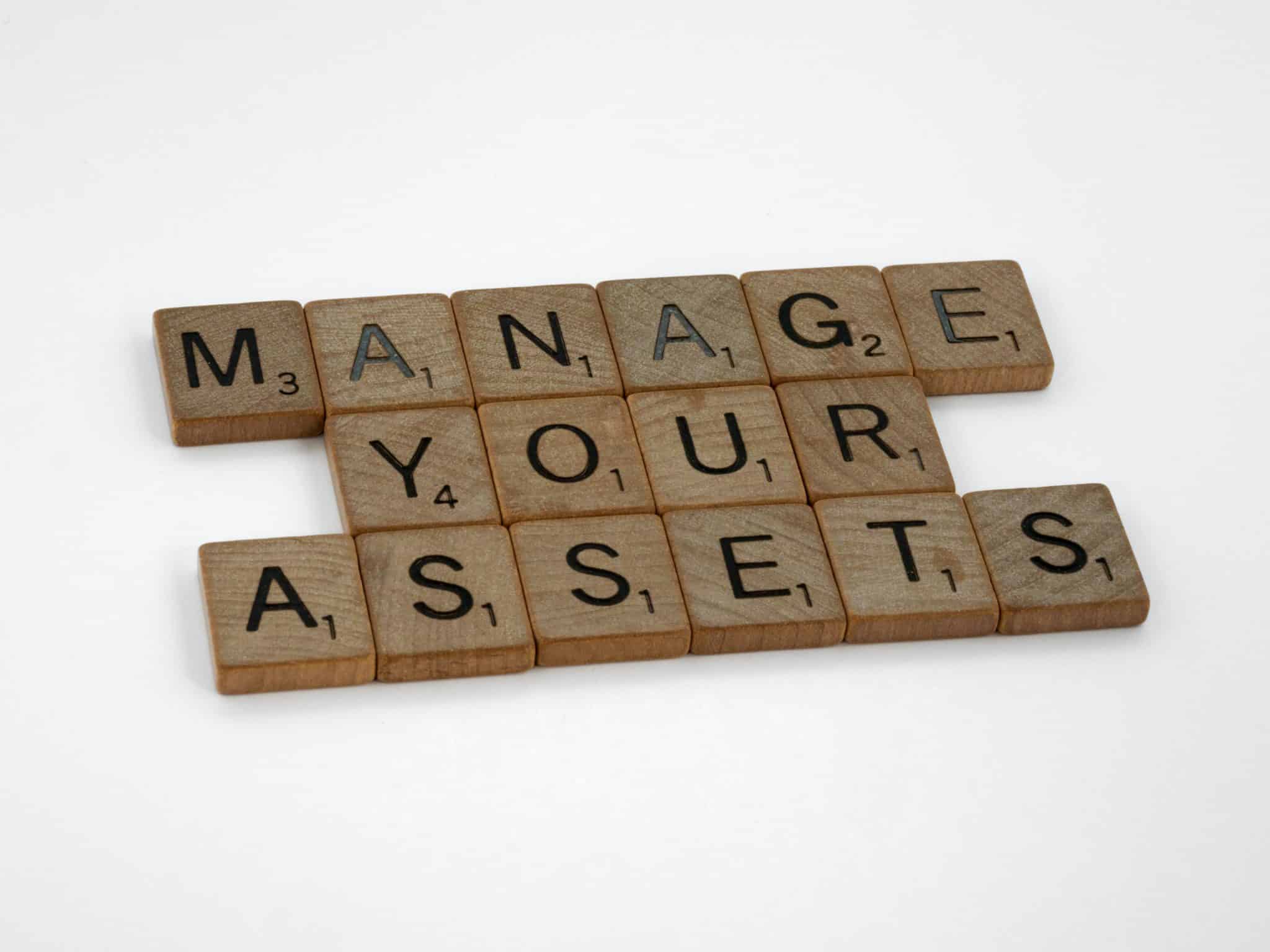What is the Difference Between Assets and Liabilities?

To understand the difference between assets and liabilities, delve into the introduction that defines these accounting terms. The section covers the definitions of assets and liabilities, providing you with the necessary foundation to comprehend their disparities. What is the difference between assets and liabilities?
Understanding the Difference Between Assets and Liabilities
Assets and liabilities can be found on the balance sheet. They are two of the most important concepts in accounting and finance. They are used to measure the financial health of a business or individual. The difference between assets and liabilities is that assets are items of value owned by a business or individual, while liabilities are obligations or debts owed by a business or individual.
Assets can be tangible, such as cash, inventory, and equipment, or intangible, such as copyrights, patents, and trademarks. Liabilities, on the other hand, are obligations to pay money or provide goods or services to another party.
Examples of liabilities include accounts payable, loans, and mortgages. Understanding the difference between assets and liabilities is essential for making sound financial decisions. Knowing how to properly manage assets and liabilities can help businesses and individuals achieve their financial goals.
Definition of Assets
Assets are resources with economic value for an individual or organization. They can be physical, like real estate or vehicles, or financial, like stocks or bonds. Intangible assets, like patents, copyrights, and brand reputation, are also important for a company’s worth. Some assets have both tangible and intangible qualities.
Assets give stability and security. They provide liquidity or collateral for loans. Acquiring and accumulating assets can help improve financial well-being. To make informed decisions, it’s important to understand the value of different types of assets.
Assets are more than just monetary. They contribute to personal growth and prosperity. Appreciating their significance helps us leverage our assets and navigate financial endeavors. Let’s embrace this knowledge and use the power of assets!
Definition of Liabilities
Liabilities are debts or obligations owed by a company or individual to others. These represent future economic sacrifices that must be made. Liabilities may be current, such as accounts payable or short-term debt, or long-term, like bonds and mortgages.
These come from past actions like buying items on credit, borrowing money, or legal obligations. They are listed on the balance sheet and are a vital part of financial reporting.
In addition, there are contingent liabilities. These are possible obligations that can become liabilities if specific events happen in the future. Examples are lawsuits, warranties, and product recalls.
It’s critical for businesses and individuals to measure and report liabilities accurately. This helps stakeholders have a clear view of their financial health. Financial statements and disclosures are essential for this.
Investopedia claims, “Liabilities are a claim on a company’s assets by other parties.” This shows that liabilities can have an immense effect on a company’s financial position and overall stability.
Key Differences Between Assets and Liabilities
To gain a clear understanding of the key differences between assets and liabilities, explore their nature, ownership, financial impact, and get familiar with examples and illustrations. Discover how each sub-section contributes to unraveling the nuances between these two important terms in the world of finance.
Nature
Assets and liabilities have special qualities. Assets symbolize value that an entity possesses and can be used to gain future benefits. On the other hand, liabilities are debts or obligations owed to external sources. Let’s explore the nature of these two monetary parts.
To gain a better understanding of assets and liabilities, let’s look at the table below:
| Aspect | Assets | Liabilities |
|---|---|---|
| Nature | Resources owned | Obligations owed |
| Ownership | Belong to the entity | Owe to external parties |
| Economic Value | Increases | Decreases |
| Examples | Cash, inventory, property | Loans, accounts payable |
The nature of assets is about resources owned by an entity. These resources could include cash, inventory, or property that add to the economic value of the company. Meanwhile, liabilities signify obligations owed by the entity to external sources like loans or accounts payable.
It is important to note that assets usually expand economic value while liabilities usually decrease it. This is because assets can generate profits or give future benefit for an organization, while liabilities need repayment and can create financial issues.
Realizing the crucial distinctions between assets and liabilities is essential for successful financial management. By recognizing what resources an entity possesses and its obligations towards external sources, organizations can make well-thought-out decisions that lead to long-term success.
Don’t miss out on understanding the details of assets and liabilities. Knowing about these essential concepts will give you a deeper knowledge of financial ideas and let you manage various business situations with assurance. So take this chance today!
Ownership
The table above gives us great info about assets and liabilities. But there’s more to it! When looking at assets, we must consider their capacity for generating income or increasing in value. Liabilities, on the other hand, are debts that need to be paid off in a certain time frame. To help you manage ownership better, here’s what to do:
- Diversify Assets: Own different types of assets, like stocks, bonds, and real estate. This way, you can protect yourself from risks and gain more returns.
- Manage Liabilities Wisely: Focus on paying off high-interest debts first. That way, you can reduce financial pressure and be in a better financial state.
- Monitor Ownership Portfolio: Keep an eye on your ownership portfolio. This will help you stay updated with market changes or personal circumstances, so you can make necessary adjustments for optimal performance.
By following these tips, you can handle ownership more skillfully. Knowing the details of assets and liabilities will help you make smart decisions, leading to greater financial safety and stability.
Financial Impact
Assets and liabilities have a huge impact on finances. Let’s look closer to understand better.
Assets include resources or items that have value. Cash, real estate, investments, and equipment are all assets. They can increase net worth and provide potential income.
Liabilities are debts or obligations to others. These can be loans, mortgages, and credit card debt. Unlike assets, they decrease net worth and require payments.
It’s important to know the financial effect of assets and liabilities. Assets contribute to wealth and income, while liabilities reduce net worth and come with payment obligations.
Analyze your current assets and liabilities to identify opportunities to build wealth and manage debts. This knowledge can help you maximize your financial well-being!
Examples and Illustrations
Take a look at the table to understand the key differences between assets and liabilities:
| Assets | Liabilities |
|---|---|
| Cash | Loans |
| Investments | Mortgages |
| Accounts Receivable | Credit Card Debt |
| Inventory | Payroll Taxes |
| Real Estate | Vendor Bills |
Assets include cash, investments, accounts receivable, inventory, and real estate. These are valuable resources that people or businesses own. Liabilities are money owed to others, like loans, mortgages, credit card debt, payroll taxes, and vendor bills.
To manage finances well:
- Minimize liabilities – Lessen debt to save more and improve cash flow.
- Optimize asset allocation – Spread investments to reduce risk and get better returns.
- Track accounts receivable – Collect payments from customers on time to boost cash flow.
- Update inventory regularly – Avoid overstocking or understocking products to optimize sales and storage costs.
By understanding the differences between assets and liabilities, financial decisions can be taken with more certainty. These suggestions will help individuals and businesses manage their finances better by concentrating on asset build-up while cutting down liabilities.
Importance of Understanding the Difference
To better grasp the distinction between assets and liabilities, it’s crucial to comprehend their significance. In order to understand the importance of this difference, we’ll explore its implications in personal finance and business finance.
Personal Finance
Personal Finance is about constructing a budget which fits with one’s income and expenditure. It includes defining financial ambitions and preparing a savings strategy to attain them. Moreover, it highlights the necessity of investing shrewdly to generate wealth and safeguard one’s fiscal future. Lastly, Personal Finance encompasses tactics for managing debt efficiently and recognizing concepts such as credit scores and rates of interest.
Plus, having expertise regarding Personal Finance allows individuals to take sensible decisions with regards to buying assets or properties, planning for retirement, setting aside money for education or unforeseen circumstances without sacrificing their present lifestyle.
In this era of notable consumerism and complex economic systems, being aware of Personal Finance is essential to keep away from falling into debt traps or encountering financial crises later in life. With financial literacy, people gain control over their financial resources and can make judicious choices about their financial future.
The National Financial Educators Council (NFEC) states that only 24% of millennials show basic financial literacy skills.
Business Finance
Business finance is key for any prosperous organization. It involves managing funds and making strategic choices to maximize gains and guarantee long-term progress. To appreciate the significance of business finance, let’s explore its principal parts.
A glimpse of the significant elements that form business finance:
| Column 1 | Column 2 |
|---|---|
| Budgeting | Cash flow management |
| Financial analysis | Risk assessment |
| Investment planning | Financial forecasting |
Budgeting helps companies plan and utilize their finances smartly.
Cash flow management ensures sufficient money for everyday operations.
Financial analysis enables corporations to inspect their financial health, recognize improvement zones and make informed decisions.
Risk assessment allows firms to avoid potential risks and safeguard their financial interests.
Investment planning consists of looking into different investment possibilities and determining how to allocate funds productively.
Financial forecasting allows businesses to anticipate future financial trends and be ready for different scenarios.
It is noteworthy that business finance has a rich history stretching back centuries. All along, individuals with sharp financial knowledge have made huge contributions to transforming the field to what it is today. From ancient civilizations forming early forms of currency exchange to the inception of modern banking systems, each milestone has laid the groundwork for the evolution of business finance practices.
In conclusion, understanding business finance is essential for organizations that want sustainable growth and profitability. By mastering its ideas and using them strategically, businesses can optimize their financial resources and stay ahead in today’s competitive marketplace.
How to Manage Assets and Liabilities Effectively
To effectively manage assets and liabilities, you need to employ strategic solutions. Explore asset management strategies and liability management strategies. These sub-sections will provide you with valuable insights on how to optimize your assets and effectively manage your liabilities, ensuring a balanced financial approach.
Asset Management Strategies
Asset management strategies involve various techniques to promote performance. This includes looking into asset lifespans, examining market trends, diversifying investments, actively managing portfolios, and making sure there’s enough liquidity. By doing this, businesses can improve their finances and keep growing.
Take Company X for example. During 2008’s economic crisis, they assessed their investments carefully to minimize potential losses. They diversified their portfolio, which allowed them to stay strong while other companies suffered severe setbacks. All this was thanks to their careful analysis of assets and liabilities.
Sound asset management strategies help organizations take on challenges and get the most out of their operations. By staying proactive and up-to-date with economic changes, they can make the most of their resources.
Liability Management Strategies
Managing assets and liabilities is a must. Effective strategies are key for minimizing risk and optimizing outcomes. Visualizing them in a table can help, without mentioning the term. Here’s an overview of the different approaches:
- Debt restructuring: Repackaging debt to improve terms.
- Liability hedging: Using derivatives to offset potential losses.
- Liability matching: Matching maturities of assets and liabilities.
Regulatory requirements also have a major role in shaping these strategies. Ensuring compliance with laws and regulations while managing liabilities.
Going back in time, debt restructuring gained prominence during the 1980s. Companies searched for ways to improve their financial positions. This shows how strategies have evolved.
Managing assets and liabilities requires skillful navigation of various strategies. Being aware of liability management intricacies allows making informed decisions, leading to stability and growth.
Difference Between Assets and Liabilities
Comprehending the contrast between assets and liabilities is vital. Assets are valuable property owned by an individual or organization. Liabilities, though, are debts that one owes to others. They’re both key for financial control.
Assets can be cash, real estate, investments, equipment, or intellectual property. These make money and can be sold for profit. Liabilities cover loans, mortgages, credit card debt, and other financial obligations. These must be repaid over time.
Maintaining financial health means having a balanced assets-to-liabilities ratio. Having more assets than liabilities results in a positive net worth. This gives you more control over your finances and growth opportunities.
Manage assets and liabilities by regularly evaluating your financial situation. Monitor assets and liabilities. Keep track of value and repayment terms. Knowing your financial standing lets you make informed decisions.
Prioritize reducing high-interest debts. Pay off loans with high interest rates, like credit card debt or personal loans with high APRs. This saves money on interest payments in the long-run.
Diversifying your assets also helps. Invest in different assets, such as stocks, bonds, real estate, or mutual funds. This reduces risk and optimizes returns.
Frequently Asked Questions
 FAQs about the Difference Between Assets and Liabilities:
FAQs about the Difference Between Assets and Liabilities:
Q1: What is an asset?
A1: An asset refers to anything of value that is owned by an individual, organization, or company. It can be tangible, such as property, vehicles, or cash, or intangible, like patents, copyrights, or trademarks.
Q2: What is a liability?
A2: A liability represents an obligation or debt owed by an individual, organization, or company. It can be a loan, mortgage, credit card debt, or any other financial burden that needs to be repaid to another party.
Q3: What is the main difference between assets and liabilities?
A3: The key difference is that assets represent what is owned and brings value, while liabilities represent what is owed and create debt. Assets contribute to net worth, while liabilities detract from it.
Q4: Can assets ever become liabilities?
A4: Yes, under certain circumstances, assets can turn into liabilities. For example, a property purchased as an investment may become a liability if its value depreciates over time, making it difficult to sell for a profit.
Q5: How are assets and liabilities related in accounting?
A5: In accounting, assets and liabilities are recorded on the balance sheet. Assets are listed on the left side, while liabilities are listed on the right side. The difference between the two is known as equity or net worth.
Q6: Why is understanding the difference between assets and liabilities important?
A6: Understanding this distinction is crucial for managing personal finances or running a business. It helps determine the financial health, solvency, and overall value of an individual or organization.
















Leave a Reply